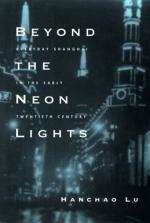|
This section contains 348 words (approx. 2 pages at 300 words per page) |
Neon advertising signs from the 1920s and 1930s have become popular collectibles today, and many artists have adopted neon tubes as a medium for their creations. Such fads trace their origins to experiments by a French chemist named Georges Claude, who became interested in neon and other inert gases when they were first being discovered by Sir William Ramsay (1852-1916). It was Claude who invented the neon light in 1910.
Claude discovered that passing electrical current through an inert gase produced light. A glass tube filled with neon gas glowed an eye-catching, fire-red color when charged with electricity. Soon, Claude discovered that mixing other gases with neon would produce different colors of light, and the tubes could be twisted and shaped to make letters and pictures.
People quickly recognized the attractive value of neon lights for decorating buildings and advertising commercial establishments. With the introduction of less expensive sources of power in the late 1800s, neon signs soon transformed the advertising business. During the Roaring Twenties, neon lighting came into fashion, and the neon light's modern counterparts (which are made with plastic tubes instead of glass) are still effective as attention-getters.
Today, more colors can be produced by varying not only the gas filling but also the coating inside the tube, and the tube material itself. Fluorescent lighting technology, developed in the 1930s, is a spinoff of the original neon light. Some fluorescent lights today use small amounts of neon. Even color television owes a debt to neon lighting. In the first practical demonstration of color television in 1928, the light source at the receiver was composed of a neon tube for red color, along with mercury-vapor and helium discharge tubes for green and blue.
Although the advertising sign is the most familiar type of neon lighting, low power neon glow lamps are widely used to indicate on/off settings and other functions on small appliances and electronic instrument panels. They can even be used to illuminate wall switches in homes. These small, lightweight neon lamps are also found in computers, voltage regulators, and industrial equipment.
|
This section contains 348 words (approx. 2 pages at 300 words per page) |


